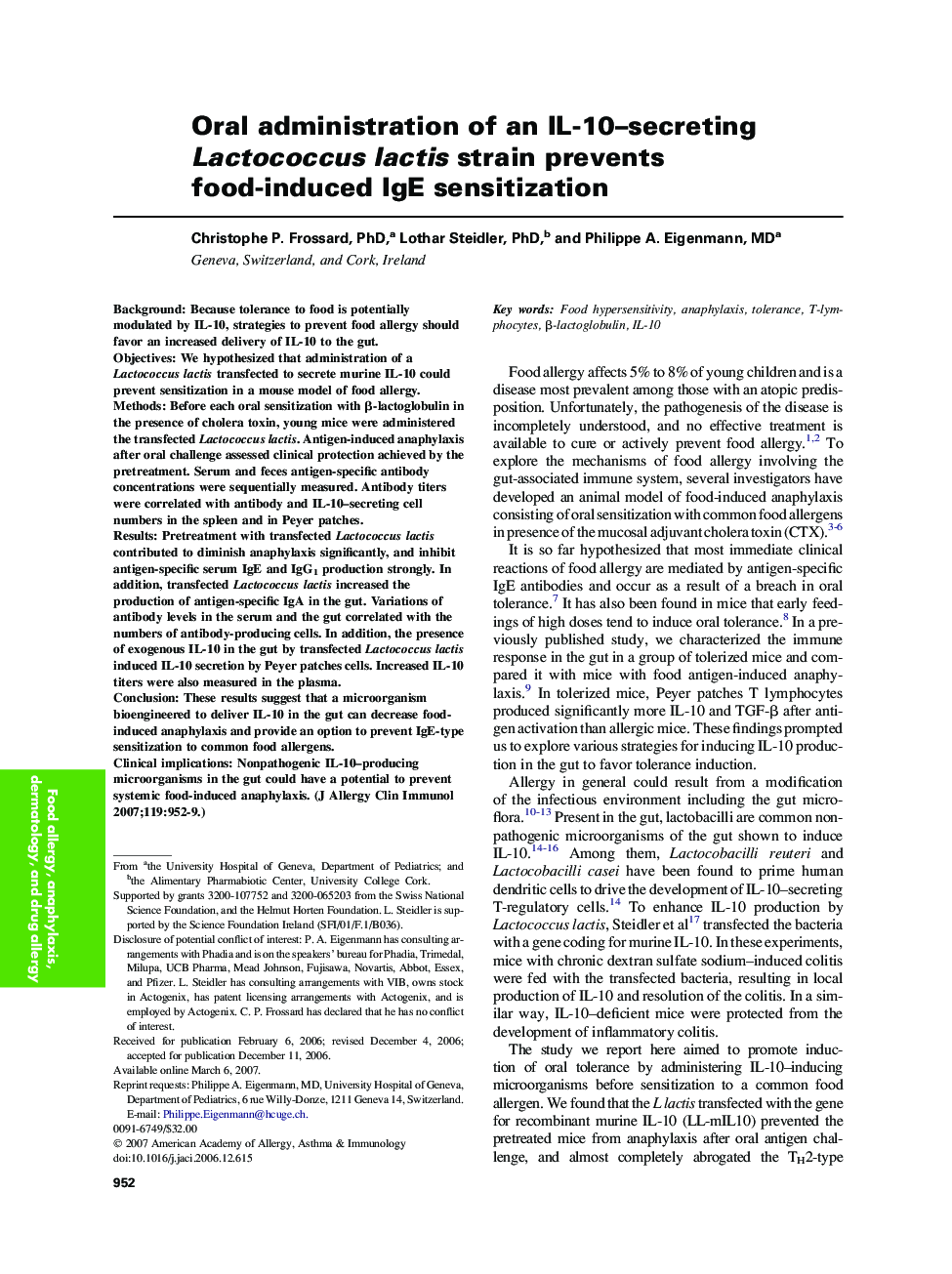| Article ID | Journal | Published Year | Pages | File Type |
|---|---|---|---|---|
| 3202038 | Journal of Allergy and Clinical Immunology | 2007 | 8 Pages |
BackgroundBecause tolerance to food is potentially modulated by IL-10, strategies to prevent food allergy should favor an increased delivery of IL-10 to the gut.ObjectivesWe hypothesized that administration of a Lactococcus lactis transfected to secrete murine IL-10 could prevent sensitization in a mouse model of food allergy.MethodsBefore each oral sensitization with β-lactoglobulin in the presence of cholera toxin, young mice were administered the transfected Lactococcus lactis. Antigen-induced anaphylaxis after oral challenge assessed clinical protection achieved by the pretreatment. Serum and feces antigen-specific antibody concentrations were sequentially measured. Antibody titers were correlated with antibody and IL-10–secreting cell numbers in the spleen and in Peyer patches.ResultsPretreatment with transfected Lactococcus lactis contributed to diminish anaphylaxis significantly, and inhibit antigen-specific serum IgE and IgG1 production strongly. In addition, transfected Lactococcus lactis increased the production of antigen-specific IgA in the gut. Variations of antibody levels in the serum and the gut correlated with the numbers of antibody-producing cells. In addition, the presence of exogenous IL-10 in the gut by transfected Lactococcus lactis induced IL-10 secretion by Peyer patches cells. Increased IL-10 titers were also measured in the plasma.ConclusionThese results suggest that a microorganism bioengineered to deliver IL-10 in the gut can decrease food-induced anaphylaxis and provide an option to prevent IgE-type sensitization to common food allergens.Clinical implicationsNonpathogenic IL-10–producing microorganisms in the gut could have a potential to prevent systemic food-induced anaphylaxis.
